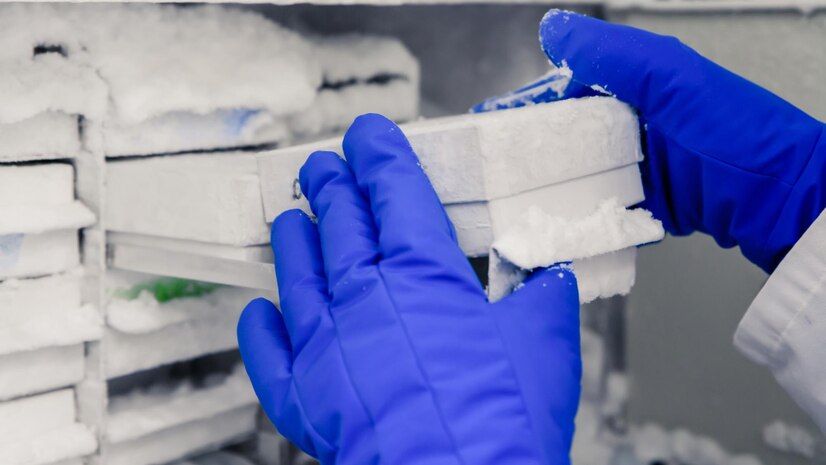In the realm of healthcare, reliable cold chain logistics are critical for preserving the efficacy and safety of pharmaceuticals. Many vaccines, biologics, and other temperature-sensitive medications depend on ultra-low temperatures provided by specialized scientific freezers and deep freezers for pharmaceuticals. However, disaster situations—such as hurricanes, earthquakes, power outages, and other unpredictable events—pose significant threats to these carefully maintained cold chains. In this context, the healthcare sector faces a crucial question: how can pharmaceutical providers maintain cold chains during such unpredictable conditions?
This article explores the challenges and solutions related to using pharmaceutical freezers in disaster situations, emphasizing practical strategies to maintain cold chains even when the environment becomes unpredictable.
Understanding Cold Chain Requirements in Pharmaceuticals
Pharmaceutical products, especially vaccines and biologics, are highly sensitive to temperature fluctuations. When exposed to temperatures outside their recommended ranges, these products can degrade, losing potency and, ultimately, becoming ineffective or even unsafe for use. This is particularly true for biological treatments, which require ultra-low temperatures maintained by scientific freezers and deep freezers for pharmaceutical applications.
To preserve these products, it’s essential to maintain an unbroken cold chain from manufacturing to distribution to administration. When a disaster disrupts this chain, the consequences can be severe—not only financially, due to wasted products, but also ethically and legally, given the potentially life-threatening outcomes for patients in need of these medications.
The Challenges of Cold Chain Management in Disaster Scenarios
Maintaining pharmaceutical-grade cold storage during disasters presents several challenges, which include:
- Power Outages
Power disruptions are one of the most common outcomes of natural disasters. Since scientific freezers and deep freezers for pharmaceuticals rely heavily on electricity, an extended power outage can compromise the entire stock of temperature-sensitive products. - Infrastructure Damage
Infrastructure, including roadways, transportation facilities, and distribution hubs, often sustains significant damage during natural disasters. These disruptions make it difficult to transport frozen pharmaceuticals to alternative storage facilities if the primary storage becomes unavailable. - Environmental Challenges
Extreme weather conditions, like floods and hurricanes, can increase the ambient temperature or humidity, placing additional stress on cold storage systems and increasing the risk of freezer malfunctions. - Supply Chain Disruptions
Disasters frequently disrupt supply chains, making it difficult to acquire backup generators, dry ice, or other materials essential for maintaining cold storage in emergencies.
Strategies for Maintaining Cold Chains with Pharmaceutical Freezers in Disaster Situations
Effectively managing cold chains during disasters requires proactive planning and the integration of advanced technologies. Here are some strategies that can help ensure the integrity of scientific freezers and deep freezers for pharmaceuticals under unpredictable circumstances.
1. Investing in Ultra-Resilient Cold Storage Solutions
Manufacturers are now developing more resilient freezer models designed to maintain cold storage under adverse conditions. Pharmaceutical freezers equipped with enhanced insulation, heavy-duty seals, and higher-quality compressors can better withstand external temperature fluctuations and maintain a stable internal environment.
Some advanced scientific freezers come with dual-cooling systems, where an additional compressor acts as a backup if the primary system fails. By investing in these resilient systems, pharmaceutical companies can bolster their disaster preparedness significantly.
2. Utilizing Backup Power Solutions
Since power outages are a primary threat to maintaining cold chains, backup power solutions are essential. These can include:
- Generator Systems: Standby generators with sufficient fuel reserves can keep deep freezers for pharmaceuticals operational for extended periods. For facilities in disaster-prone areas, high-capacity generators capable of supporting ultra-low temperature freezers are essential.
- Battery Backup: Some modern scientific freezers are designed with built-in battery backup systems that can sustain the unit for several hours in the event of a power outage. While not a long-term solution, this can provide enough time to initiate other contingency measures.
- Solar Power Options: Solar energy is an increasingly viable option, especially in areas with abundant sunlight. Photovoltaic systems can support pharmaceutical freezers during extended power outages, though it is crucial to invest in a system that can store excess energy to ensure continuous operation through the night or during overcast weather.
3. Portable Freezers for Emergency Transfer
When power cannot be restored promptly, having portable deep freezers for pharmaceuticals on hand is essential for transferring medications to alternative facilities. Mobile freezers, typically mounted on trucks, are designed specifically to maintain stable temperatures during transportation.
For pharmaceutical companies operating in disaster-prone areas, it may be worthwhile to keep one or more mobile freezers readily available, allowing for the swift transfer of sensitive materials when standard freezers become compromised. Coordinating with logistics companies that specialize in transporting temperature-sensitive products can also improve preparedness.
4. Leveraging Real-Time Monitoring Systems
In unpredictable environments, real-time monitoring systems are invaluable. IoT-enabled scientific freezers can provide constant updates on the internal temperature, humidity, and operational status, notifying managers instantly if any parameter falls outside acceptable ranges.
These systems also allow personnel to take corrective actions remotely, either by initiating backup systems or starting emergency protocols. By employing predictive analytics, these monitoring systems can also anticipate potential failures based on historical data, allowing for preemptive maintenance to avoid malfunctions.
5. Emergency Storage Solutions: Utilizing Dry Ice and Cryo-Packs
When power and refrigeration options are unavailable, dry ice and cryo-packs can serve as temporary storage solutions. Dry ice, which sublimates at -78.5°C, is ideal for maintaining ultra-low temperatures in deep freezers for pharmaceuticals.
For organizations storing large quantities of temperature-sensitive products, maintaining a stockpile of dry ice can be a practical emergency measure. However, using dry ice requires careful handling due to the risk of carbon dioxide buildup in enclosed spaces, so proper ventilation is essential.
6. Strategic Partnerships and Disaster Response Planning
Pharmaceutical companies must establish partnerships with logistics providers, emergency services, and regional health organizations to ensure that critical medications can be transported to safe locations during disasters. Developing a well-structured disaster response plan that includes cold chain management protocols is also crucial.
A robust plan should include:
- Identifying Backup Storage Facilities: These can include nearby hospitals, research institutions, or pharmaceutical partners who have reliable freezer capacity.
- Coordinated Communication Protocols: Communication between all stakeholders—pharmaceutical providers, logistics partners, and healthcare facilities—is essential for coordinating emergency transport and storage of medications.
- Periodic Drills and Simulations: Conducting regular disaster response drills ensures that all staff members know their roles and can act quickly during an actual emergency.
7. Geographic Distribution of Cold Storage Facilities
Another strategy to protect the pharmaceutical cold chain during disasters is to distribute cold storage facilities geographically. By diversifying storage locations, organizations can avoid centralizing risk. In the event of a localized disaster, medications stored in unaffected areas can remain safe, allowing for quicker recovery of critical supplies.
For organizations with a global or national presence, this strategy requires the establishment of multiple scientific freezers and deep freezers for pharmaceuticals at strategic points across regions. Such geographic distribution also requires collaboration with transportation partners skilled in handling temperature-sensitive goods.
Conclusion
The stakes of maintaining pharmaceutical cold chains are higher than ever, especially in the face of frequent natural disasters and other unpredictable events. The adoption of resilient cold storage solutions, reliable backup power systems, real-time monitoring, and well-coordinated emergency protocols is essential for ensuring that temperature-sensitive medications remain viable and effective.
As the healthcare industry continues to face new and emerging challenges, it’s crucial that pharmaceutical providers and healthcare facilities take proactive steps to safeguard their cold chains. With careful planning and strategic investment, companies can help protect the integrity of scientific freezers and deep freezers for pharmaceuticals, ensuring that critical medications are available to those in need, even in the most challenging of times.










 /home/u448362301/domains/theexpotab.com/public_html/wp-content/themes/foxiz/templates/popup.php on line 167
/home/u448362301/domains/theexpotab.com/public_html/wp-content/themes/foxiz/templates/popup.php on line 167